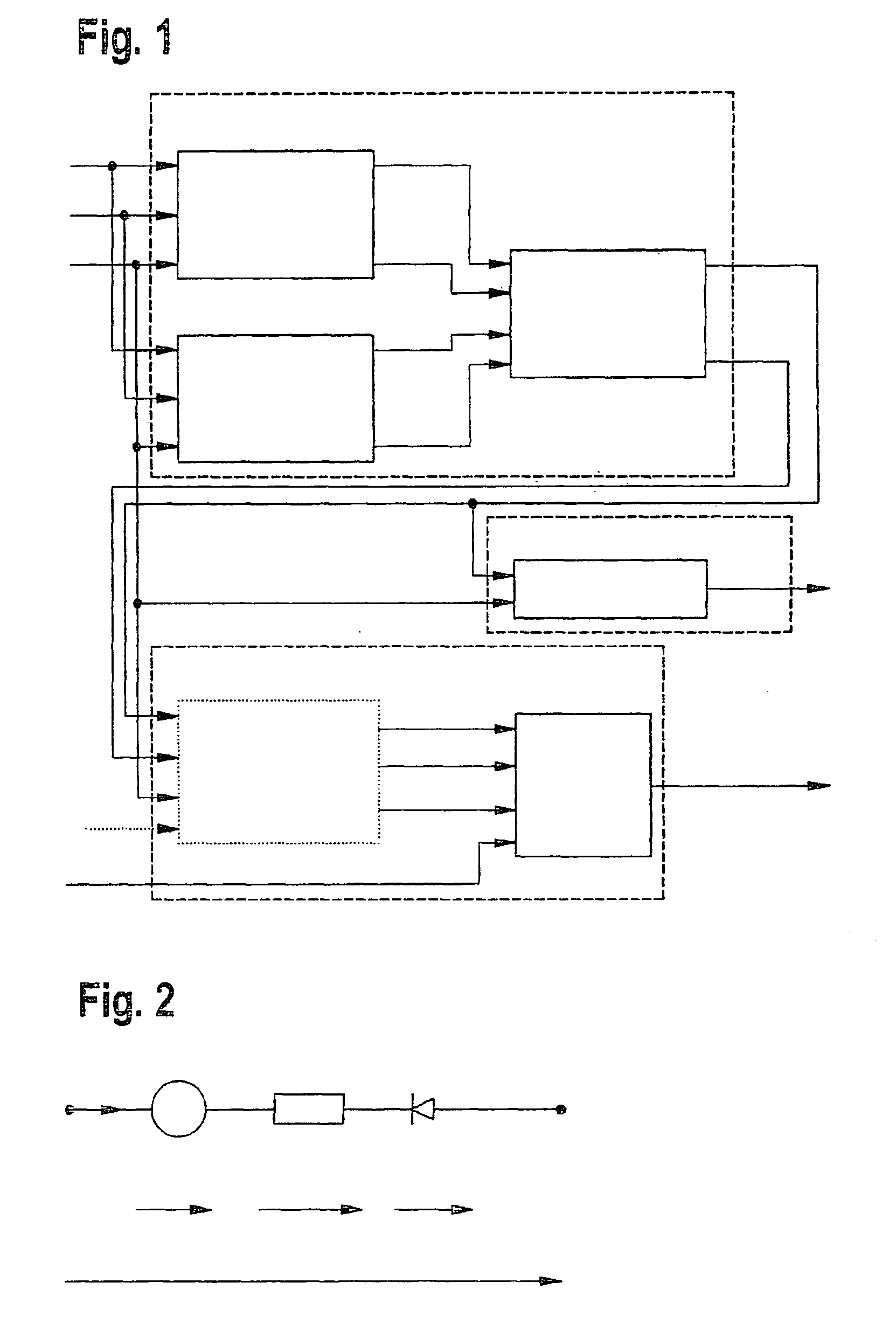Methods for determining the charge state and/or the power capacity of charge store
a technology of charge state and power capacity, which is applied in the direction of secondary cell servicing/maintenance, instruments, electrochemical generators, etc., can solve the problems of large expense, errors in the estimation of charge state and operability, etc., and achieve accurate estimation, accurate determination of charge state, and large operating range
- Summary
- Abstract
- Description
- Claims
- Application Information
AI Technical Summary
Benefits of technology
Problems solved by technology
Method used
Image
Examples
Embodiment Construction
FIG. 1 shows the basic structure of the battery state detection system using two state estimation and parameter estimation methods active at two different operating points of the battery. The number of the methods used is not necessarily limited to two; however, at least one method is model-based, i.e., the state variables and parameters of a battery model are adapted to the real values, e.g., via a recursive least-square estimator, e.g., an extended Kalman filter.
State variables z(e.g., open-circuit voltage U00) and parameters p(e.g., internal resistance Ri) required for determining the state of charge and the operability of the battery are obtained from continuous measurement of battery voltage UBatt, battery current IBatt, and battery temperature TBatt by the state and parameter estimating system. The state of charge calculation determines state of charge soc from vector z of the state variables and from the instantaneous battery temperature TBatt, while the instantaneous operabi...
PUM
| Property | Measurement | Unit |
|---|---|---|
| open-circuit voltage | aaaaa | aaaaa |
| state of charge | aaaaa | aaaaa |
| battery voltage | aaaaa | aaaaa |
Abstract
Description
Claims
Application Information
 Login to View More
Login to View More - R&D
- Intellectual Property
- Life Sciences
- Materials
- Tech Scout
- Unparalleled Data Quality
- Higher Quality Content
- 60% Fewer Hallucinations
Browse by: Latest US Patents, China's latest patents, Technical Efficacy Thesaurus, Application Domain, Technology Topic, Popular Technical Reports.
© 2025 PatSnap. All rights reserved.Legal|Privacy policy|Modern Slavery Act Transparency Statement|Sitemap|About US| Contact US: help@patsnap.com

